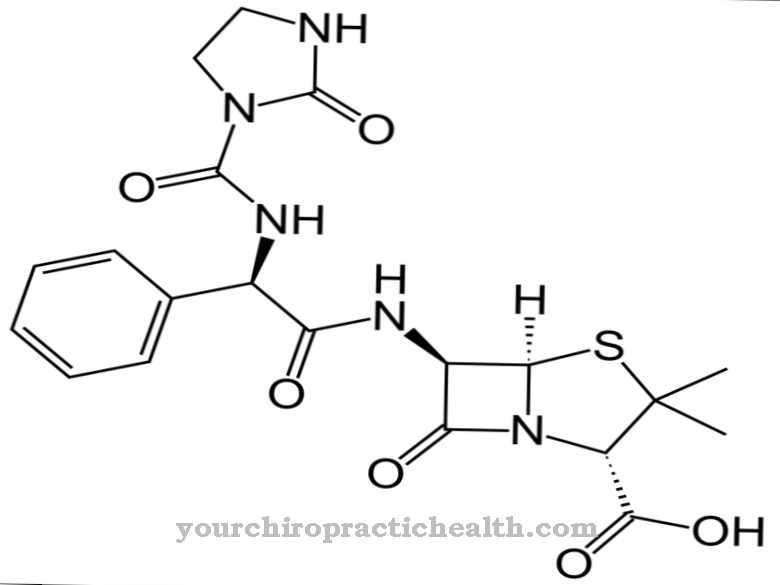At Desflurane it is an anesthetic that is assigned to the class of active ingredients Flurane. The inhalation anesthetic is widely used due to its very good hypnotic properties and its ease of control. In Germany, Austria and Switzerland, Desflurane is marketed by the American pharmaceutical company Baxter under the trade name Suprane®.
What is Desflurane?
Desflurane is a proven and widely used anesthetic. It is inhaled and is therefore called an inhalation anesthetic. Its pharmacological properties make desflurane a member of the flurane class of active ingredients, the most important group of anesthetics, which also includes the related drugs sevoflurane and isoflurane.
Desflurane is one of the few anesthetics that has good circulatory stability and is easy to control at the same time. The controllability of the substance can be explained by a particularly rapid flooding in and out.
Desflurane is also characterized by a strong hypnotic effect, i. H. Patients can quickly be put into a deep sleep (Greek: ὕπνος hypnos), which enables operations to be carried out without interference. The analgesic and muscle-relaxing effects of desflurane are, however, only very minimal, which is why additional preparations may have to be administered in order to ensure the safe performance of medical interventions.
In chemistry, the inhalation anesthetic is described by the empirical formula C 3 - H 2 - F 6 - O, which corresponds to a moral mass of approx. 168.0 g / mol. The drug is subject to very strict pharmacy and prescription requirements.
Pharmacological effect on the body and organs
The exact mechanism of action of desflurane has not been fully clarified, but rather is controversial in detail. Various theories and approaches are represented in the literature. Nevertheless, there is basically agreement that the effect is achieved through a complex interplay of lipids, water and proteins. Interactions should affect the nerve membranes.
The efficacy and safety of desflurane is undisputed due to many years of experience with the drug. Numerous studies have shown that the anesthetic has a so-called blood-gas distribution coefficient of 0.42. Accordingly, the concentration of the active ingredient in the blood is 0.42% -vol.
Desflurane is only sparingly soluble, which causes rapid flooding and draining. This enables the rapid falling asleep and waking up phases typical for the drug. With a minimum alveolar concentration (anesthetic potency) of 6%, Desfluan lags behind the related active ingredients sevoflurane and isoflurane.
The rate of metabolism of the inhalation anesthetic is also pharmacologically relevant. This is set at about 0.1%, which makes damage to the liver unlikely. Desfluan is therefore not necessarily a contraindication for patients with liver damage. In some cases, despite the organ damage, it can be used safely.
Medical application & use for treatment & prevention
Desflurane has primarily hypnotic effects, so that patients can be put into a deep state of sleep. The anesthetic is therefore used to induce or perform anesthesia. Only in this case is there a justifiable indication.
Due to its hypnotic effects and its property as an anesthetic, desflurane is subject to prescription and pharmacy requirements in all countries in which it is available. As a rule, it is not given out to patients, but only to the treating doctor. Because only an experienced anesthetist is authorized to award. He will vaporize the medication delivered as a liquid in a special anesthetic device and give it to the patient for inhalation. Independent ingestion by the patient is therefore ruled out due to the large number of possible dangers.
You can find your medication here
➔ Medicines for painRisks & side effects
Desflurane may only be used under medical supervision. The allocation must therefore be carried out by or under the supervision of an anesthetist. Otherwise, a loss of control is to be feared, which massively increases the probability of risks and side effects and triggers unforeseeable dangers.
The most common side effects of desflurane include: a. Coughing fits, mild or severe headache and gastrointestinal complaints, which can be expressed as nausea or vomiting.
Hyper- or hypotonia (too low or too high blood pressure) and cardiac rhythm disorders are also common. These can prove to be bradycardia (falling below the usual heart rate) or tachycardia (medically relevant exceeding of the typical heart rate). In addition, the development of an inflammation of the throat mucous membrane (pharyngitis) is also possible.
Desflurane must not be administered if there is a contraindication. This is the case if hypersensitivity or allergy to this or related active substances is known. Even if there is a diagnosed risk of coronary heart disease, there is a circumstance contrary to the intake. This also applies to existing malignant hyperthermia.

.jpg)






















.jpg)



